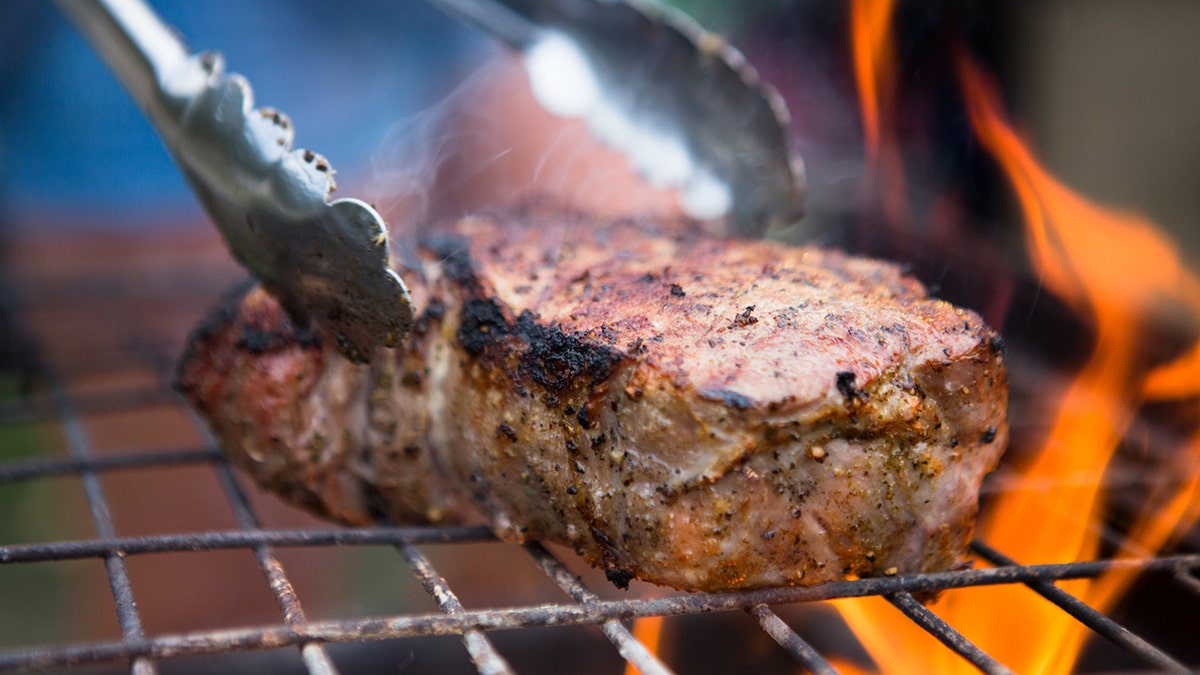
Avoid these common grilling mistakes. (iStock)
Labor Day might be one of the last warm weekends to fire up the grill. But before you lay on those hot dogs or racks of ribs, know this: Even if you consider yourself pretty good with your grill, there are certain things you're doing plain wrong.
Curious what mistakes you might be making? Don't panic: Here are eight grilling misfires you should avoid to guarantee good grilling.
1. Putting the grill up against the house
Always keep your grill at least 10 feet from your home — or any structure, like the garage, porch, or breezeway. Got that?
Grilling directly under a tree isn't advisable either, as sparks might ignite branches, and never cook under a tent, says Andrea Correale, a celebrity caterer at Elegant Affairs. Worried that sparks might ruin the grass or deck beneath your grill? Eddie Zielinski, the "grill master" at Lowe's, suggests placing your grill on top of a nonflammable mat or tarp.
2. Forgetting to preheat
Allow about 15 minutes for gas grates to heat or charcoal to achieve the right temperature. Three things can happen if you don't preheat, notes home expert Jamie Novak: "The meat is more likely to stick to the grates, you'll miss out on those signature grill lines and a seared exterior, and you risk drying out the food, because it has to stay on the fire longer to finish cooking," she says. Coat grates with cooking spray before you turn it on, or brush the grill with oil, adds Correale. "Use one that has a high smoke point, like avocado or safflower oil," she says.
3. Not cleaning greasy grates
No one wants to scrub the grill in the dark after the party's shut down, but cleanliness is next to barbecue godliness. Before tackling your mess, close the grill, turn the gas to high (or add more charcoal to reach this temperature) for 10 minutes, recommends Alex Battista, a home expert at Wayfair. "This burns off most remaining food, sauces, or grease," she says.
More From Realtor.com
Next, remove the grates, soak them in soapy water (a plastic kiddie pool is ideal for this) and then scrub them with a steel wool pad, suggests Zielinski. But skip wire brushes—those sharp bristles can break off and end up in your food.
4. Leaving the grill out in the rain
Don't abandon your rig! Instead, pull it into the garage and cover it with a tarp. But if you did expose the grill to the elements, check for rust. "Examine the joints and connectors and use a wire brush to remove rust, and then clean up the grime and polish it with baking soda and a piece of aluminum foil," suggests Zielinski. And always keep that baking soda handy to smother a grease fire.
5. Goosing the flames
Think you can speed the fire along with another squirt of lighter fluid? You risk ruining your meat—and losing your eyebrows—if you try to goose the flames. And never be tempted to add a bit of kerosene or gasoline to achieve a bigger fire, as both can cause dangerous flare-ups.
6. Ignoring propane leaks
Ever heard of Venturi tubes? On a gas grill, these tubes feed gas to the burners — and they need to be checked for leaks annually. "Run a little soapy water along the fuel line to see if bubbles form when the gas is on," says Zielinski. If they do, "tighten the lines or have them replaced."
Venturi tubes also need cleaning because spiders love to nest in them in the off season, which clogs the line and prevents the gas from igniting. Use soapy water and a special Venturi brush or a pipe cleaner to swab the tube and clean out webs.
And don't leave propane tanks outside or in direct sunlight; store them in the garage. The reason? The tank could heat up, allowing the relief valve to open and leak propane — and that's a fire hazard.
7. Putting out sticky ketchup bottles
A grimy mustard jar won't hurt anyone — but it's gross. Instead, streamline your condiments by decanting them into muffin tins. "Fill each cup with ketchup, mayo, pickles, and onion slices," says Novak. Bonus: It's better looking than half-empty bottles and easier to pass around the table.
8. Not keeping track of which fare is rare, medium, or well done
Not sure which burgers are rare vs. well done? Color coding can help: Use red plates for rare burgers, blue for medium, and white for well-done. Or label plates R, M and W with a marker. Problem solved!




















